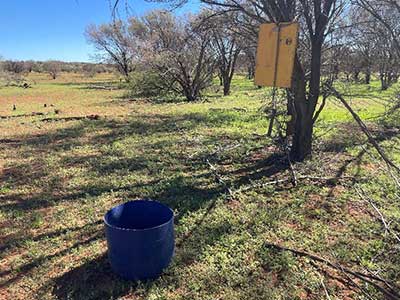Benefits already obvious from the Central Australian Self Herding (CASH) producer demonstration site

Caption: An example of a homemade wind chime used as a sound cue to attract cattle to a desired location.
The first year of the Central Australian Self Herding (CASH) project saw multiple properties north and south of Alice Springs join the project.
Self-herding is the term given to a suite of management activities that use an understanding of livestock behaviour to alter the way an animal uses the grazing landscape. Taking an active role in shaping the way cattle reside in their home areas allows pastoralists to better manage grazing pressure and nutrient supply across large areas. Using techniques that are attractive to cattle effectively means that animals choose the desired outcome.
Four businesses with six stations have been involved in the project activities to date. Collectively they manage an area of 22,493square kilometers with approximately 31,500 cattle under management.
The most notable example was the Reliable Retention strategy that has enabled one of the participants to reduce stock settling time on newly established water points from one week to one day. The cattle had been trained to recognize certain cues as offering a dietary reward and a desirable place to stay. The cues are simple and easy to use. In this case, the producer used a sound cue (a homemade wind chime constructed from an old windmill blade and a piece of poly pipe) and a smell cue (raspberry cordial). The new watering point was quickly recognised as a safe place to be and cattle did not attempt to head back to the old watering point. This enabled the cattle to quietly explore the new pastures and establish new grazing patterns more evenly from the water point. The use of self-herding strategies has changed the way this local producer moves cattle around the property. “Instead of trying to force an animal to go where we want them to go, we are now using attractants combined with stress free stockmanship to get an animal to go there because they want to.”
In 2021, the project will conduct more extension days in Alice Springs and on stations in the region. Further experiments will be conducted on the Old Man Plains Research Station to quantify some of the effects of specific self-herding tactics.
More information
For more information contact:
Bruce Maynard
Phone: 0428 890 110
brucemaynard@outlook.com
Angus Duguid
Phone: 08 8951 8106
angus.duguid@nt.gov.au.
